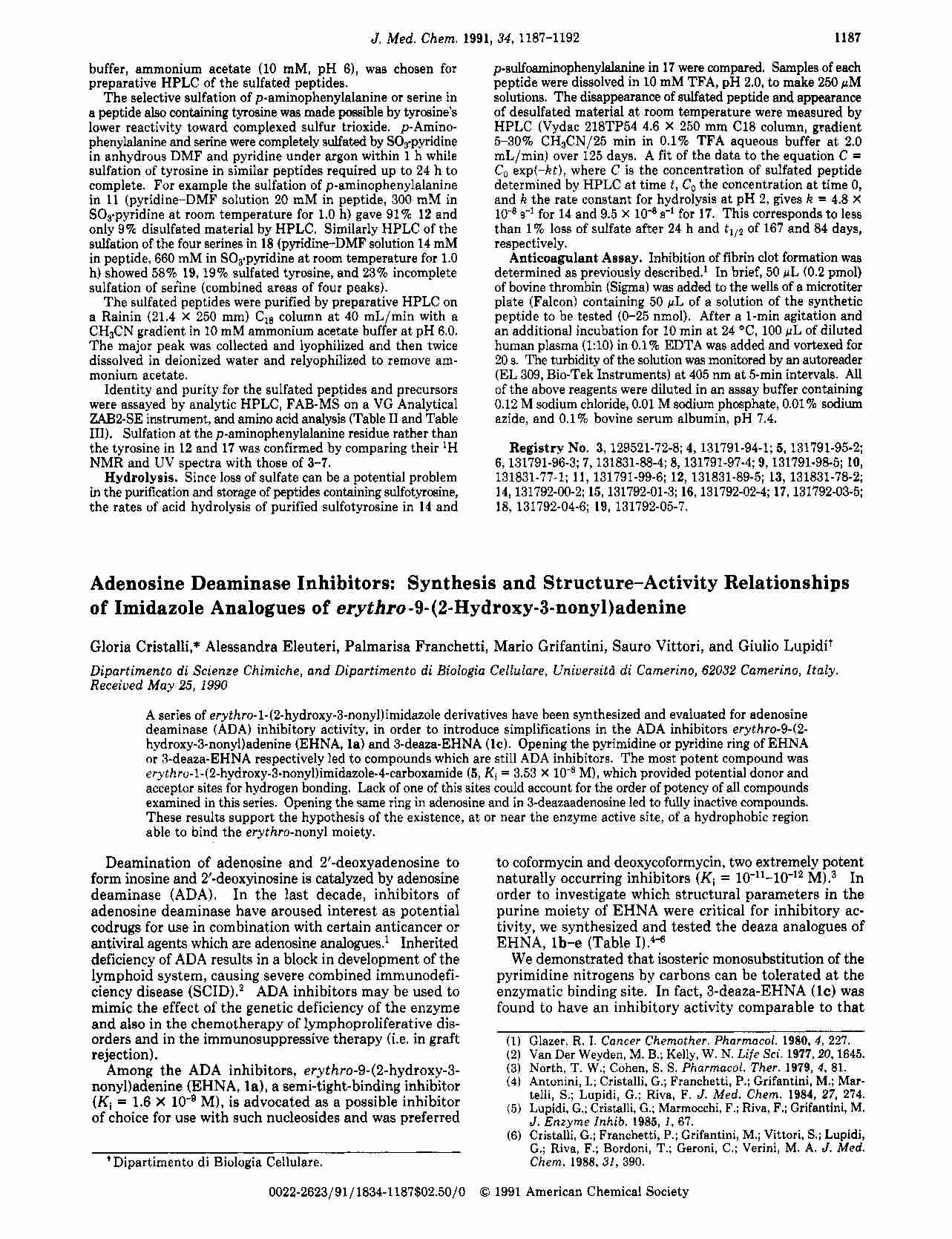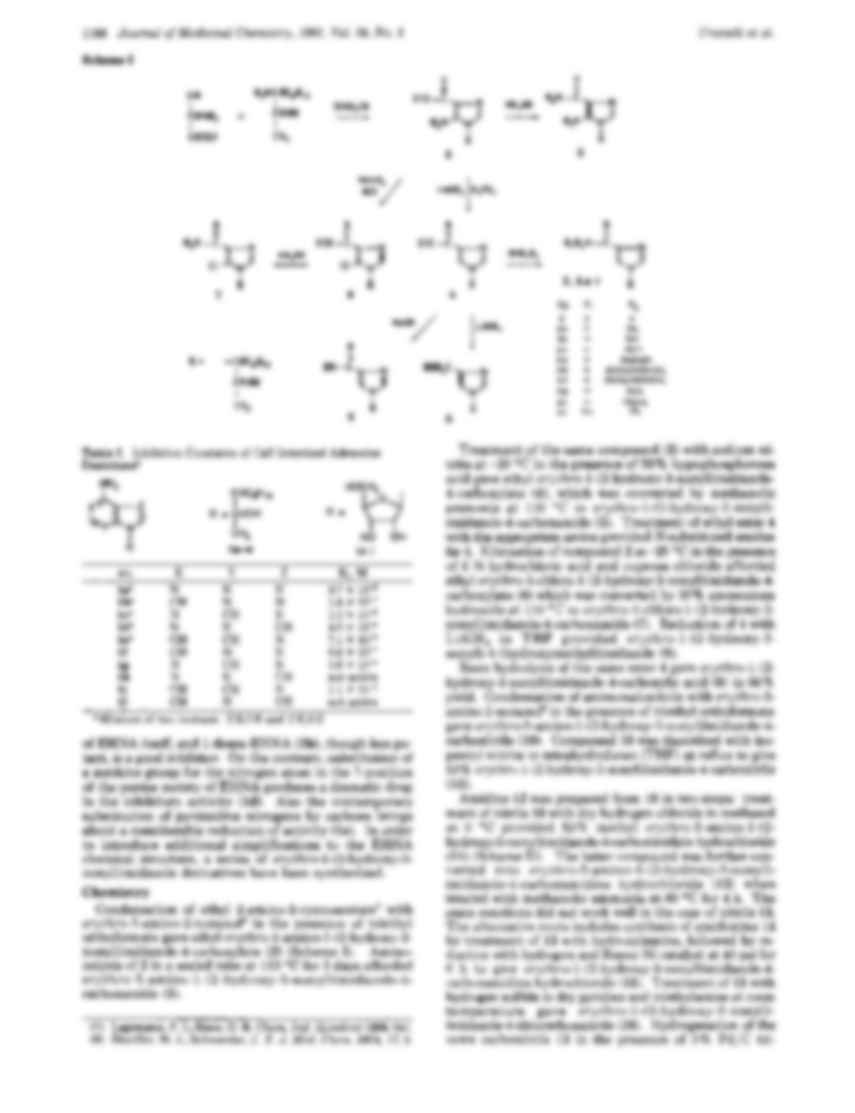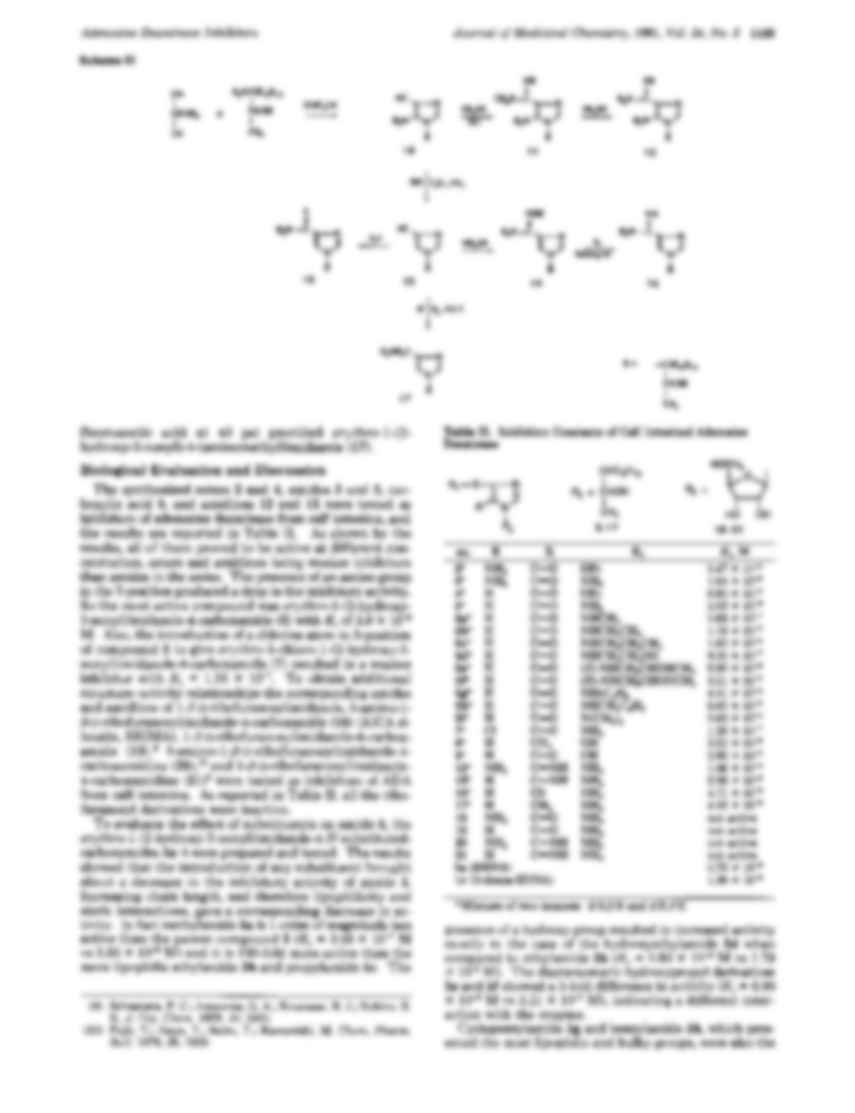To tylko jedna z 6 stron tej notatki. Zaloguj się aby zobaczyć ten dokument.
Zobacz
całą notatkę



J. Med. Chem. 1991,34, 1187-1192
buffer, ammonium acetate (10 mM, pH 6), was chosen for
preparative HPLC of the sulfated peptides.
The selective sulfation of p-aminophenylalanine or serine in
a peptide also containing tyrosine was made possible by tyrosine's
lower reactivity toward complexed sulfur trioxide. p-Aminophenylalanine and serine were completely sulfated by SO,.pyridine
in anhydrous DMF and pyridine under argon within 1 h while
sulfation of tyrosine in similar peptides required up to 24 h to
complete. For example the sulfation of p-aminophenylalanine
in 11 (pyridine-DMF solution 20 mM in peptide, 300 mM in
S0,spyridine a t room temperature for 1.0 h) gave 91% 12 and
only 9% disulfated material by HPLC. Similarly HPLC of the
sulfation of the four serines in 18 (pyridineDMF solution 14 mM
in peptide, 660 mM in S03.pyridine a t room temperature for 1.0
h) showed 58% 19, 19% sulfated tyrosine, and 23% incomplete
sulfation of seiine (combined areas of four peaks).
The sulfated peptides were purified by preparative HPLC on
a Rainin (21.4 X 250 mm) C18 column a t 40 mL/min with a
CH3CN gradient in 10 mM ammonium acetate buffer a t pH 6.0.
The major peak was collected and lyophilized and then twice
dissolved in deionized water and relyophilized to remove ammonium acetate.
Identity and purity for the sulfated peptides and precursors
were assayed by analytic HPLC, FAB-MS on a VG Analytical
ZAB2-SE instrument, and amino acid analysis (Table I1 and Table
111). Sulfation at the p-aminophenylalanine residue rather than
the tyrosine in 12 and 17 was confirmed by comparing their 'H
NMR and UV spectra with those of 3-7.
Hydrolysis. Since loss of sulfate can be a potential problem
in the purification and storage of peptides containing sulfotyrosine,
the rates of acid hydrolysis of purified sulfotyrosine in 14 and
1187
p-sulfoaminophenylalaninein 17 were compared. Samples of each
peptide were dissolved in 10 mM TFA, pH 2.0, to make 250 pM
solutions. The disappearance of sulfated peptide and appearance
of desulfated material a t room temperature were measured by
HPLC (Vydac 218TP54 4.6 X 250 mm C18 column, gradient
5-30% CH3CN/25 min in 0.1% TFA aqueous buffer at 2.0
mL/min) over 125 days. A fit of the data to the equation C =
Co exp(-kt), where C is the concentration of sulfated peptide
determined by HPLC a t time t , Cothe concentration a t time 0,
and k the rate constant for hydrolysis at pH 2, gives k = 4.8 X
IO4 s-l for 14 and 9.5 x IO4 s-l for 17. This corresponds to less
than 1% loss of sulfate after 24 h and tlI2 of 167 and 84 days,
respectively.
Anticoagulant Assay. Inhibition of fibrin clot formation w a ~
determined as previously described.' In brief, 50 pL (0.2 pmol)
of bovine thrombin (Sigma) was added to the wells of a microtiter
plate (Falcon) containing 50 pL of a solution of the synthetic
peptide to be tested (0-25 nmol). After a I-min agitation and
an additional incubation for 10 min a t 24 OC, 100 pL of diluted
human plasma (1:lO) in
... zobacz całą notatkę






Komentarze użytkowników (0)